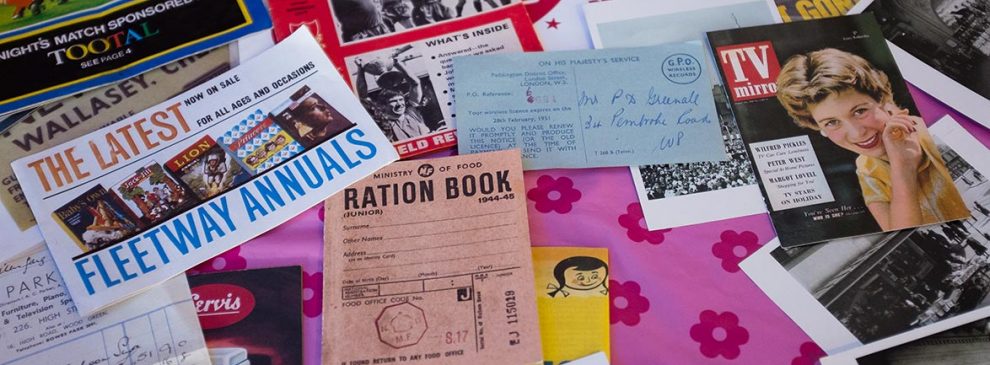Community Spirit, Global Impact: Sustainability and scalability in culture, health and wellbeing programmes
Added on Monday, October 12th, 2020
September saw another significant milestone in the evolution of House of Memories, the award winning dementia awareness programme led by National Museums Liverpool (NML), following the launch of a bespoke version of the My House of Memories App, in collaboration with the National Heritage Board and the British Council in Singapore. This is the second licensed international adaptation of the programme, further to an earlier collaboration with the Minnesota Historical Society in the US. Many congratulations to the House of Memories team, led by Carol Rogers MBE at NML.
I have had the privilege of researching the impact of the programme, at different stages of its development, since 2013 and have often described it as unprecedented in its scale and reach. Short termism is one of the recurring challenges raised within the arts and health community, with reference to the brevity and relatively small-scale nature of some of the great project-based work that is undertaken in and with communities across the UK. There is often little scope for ongoing development of such work, mostly due to transient funding streams and fixed-term commissions. House of Memories has managed to buck this trend, with extensive national and now international reach and substantial participant numbers. By September 2020 for example, more than 12,000 health and social care professionals and family carers had participated in House of Memories training events in England and there had been more than 32,000 downloads of the My House of Memories app.
The short-term nature of commissioned arts and health activity also affects the available research and evidence base, with many rapid response evaluation studies that are only able to consider short-term impact and outcomes. This has been true of some of our individual evaluation studies of House of Memories cohorts, as per the reporting requirements of commissioners including the Department of Health. We have been incredibly fortunate however in sharing a long-term research partnership with the team at NML, which has enabled the development of a research framework that has shown consistent outcomes throughout the development of the programme in three core areas. These include professional learning and development; the subjective wellbeing of participating carers; and social value and return on investment.
Perhaps most significantly, this has also enabled us to develop, from a more ethnographic perspective through spending quality time with the team and its extended networks, an understanding of the interrelated mechanisms and specific qualities of the programme, which have contributed to its scalability and sustainability. I had the pleasure recently of sharing and discussing some of these core ‘design principles’ (described below) with NML’s Carol Rogers, in a joint presentation to the European Healthcare Design 2020 conference:
Collaborative leadership
At a strategic level, an extended, cross-sector community of practice, including a range of cultural partners, health and social care agencies, local authorities and central government departments, has supported the programme’s development. I have used collaborative leadership as a useful concept for framing cultural sector development initiatives before, and have observed the characteristics of effective collaborative leadership throughout our research on House of Memories. These include understanding stakeholder needs as evidenced by the development of the original pilot programme in conversation with the Department of Health, on the need for upskilling in person-centred approaches to dementia care and the limitations of existing, more clinically led training provision.
Distributed ownership and lateral decision-making are also key characteristics of collaborative leadership and of the development of House of Memories. The pilot train the trainer programme, commissioned by Health Education England in 2016, is a good example of this. This specific programme involved museum professionals from the House of Memories team training acute health care professionals in participating NHS hospital trusts across the North West, to subsequently deliver the training themselves on a cascaded basis to hospital colleagues. Similarly, international versions of the programme have been designed to be responsive to local needs and to complement the organisational culture, identity and collections of host institutions, whilst benefiting from the NML team’s expertise, brand and reputation.
Co-design and production
In the spirit of true collaboration, the programme has been consistently designed and produced in partnership with cross-sector stakeholders locally, nationally and internationally. In the case of the My House of Memories app for example, this included people with dementia and their carers in the city of Liverpool, through partnerships with local charities and community organisations. The development team also included health and social care professionals and academics from health and psychology departments in the city’s universities.
It is also important to note that the programme has its own supply chain and creative ecology through partnership working and co-production with other creative and cultural organisations. This includes digital developers for the My House of Memories app, a theatre company for live forum theatre and filmed, character based documentaries as part of training events, and numerous national and international museum and gallery partners.
Mixed funding model
As well as creating business opportunities for partner creative and cultural industries, the programme itself operates with a mixed funding model, a feature that has been integral to its sustainability. As already mentioned, the programme has received public funding from health and social care commissioners and other grant providers. This has been complemented by charitable and philanthropic donations; commercial sponsorship; and in-house retail enterprises. As an indicator of its success and value to NML as a national museums group, the programme is now also incorporated as a core funded service with a permanent team.
Evidence-based advocacy
Finally, the team’s constructive and ethical commitment to evaluation and research has also played an integral role in its scalability and sustainability. I would not be able to comment on the strategic and operational management of the programme without the access and generosity afforded to me, as an independent researcher, by the team at NML. Ours is one of several research partnerships initiated by the team – see for example other research with population health scientists at the University of Liverpool – through a genuine desire to generate new knowledge and share learning, as well as to ensure that the programme is as scientifically informed as possible.
With regards to programme evaluations, they are used as they should be by commissioning cultural organisations. Firstly, as working documents that inform the future development of programmes according to what works and to what doesn’t work. It has been reassuring to know that any recommendations made through successive evaluation reports have been useful to the team. Secondly, as documents that reliably communicate the value of programmes to funding bodies and other relevant parties. Our research on its social value and return on investment (SROI) has been applied particularly well in this context with respect to House of Memories, and I have written before on why I think this particular research approach matters to the sector. Research and evaluation on House of Memories has been used effectively and with organisational integrity, to create real strategic influence and promote its cross-sector collaborative advantage.









